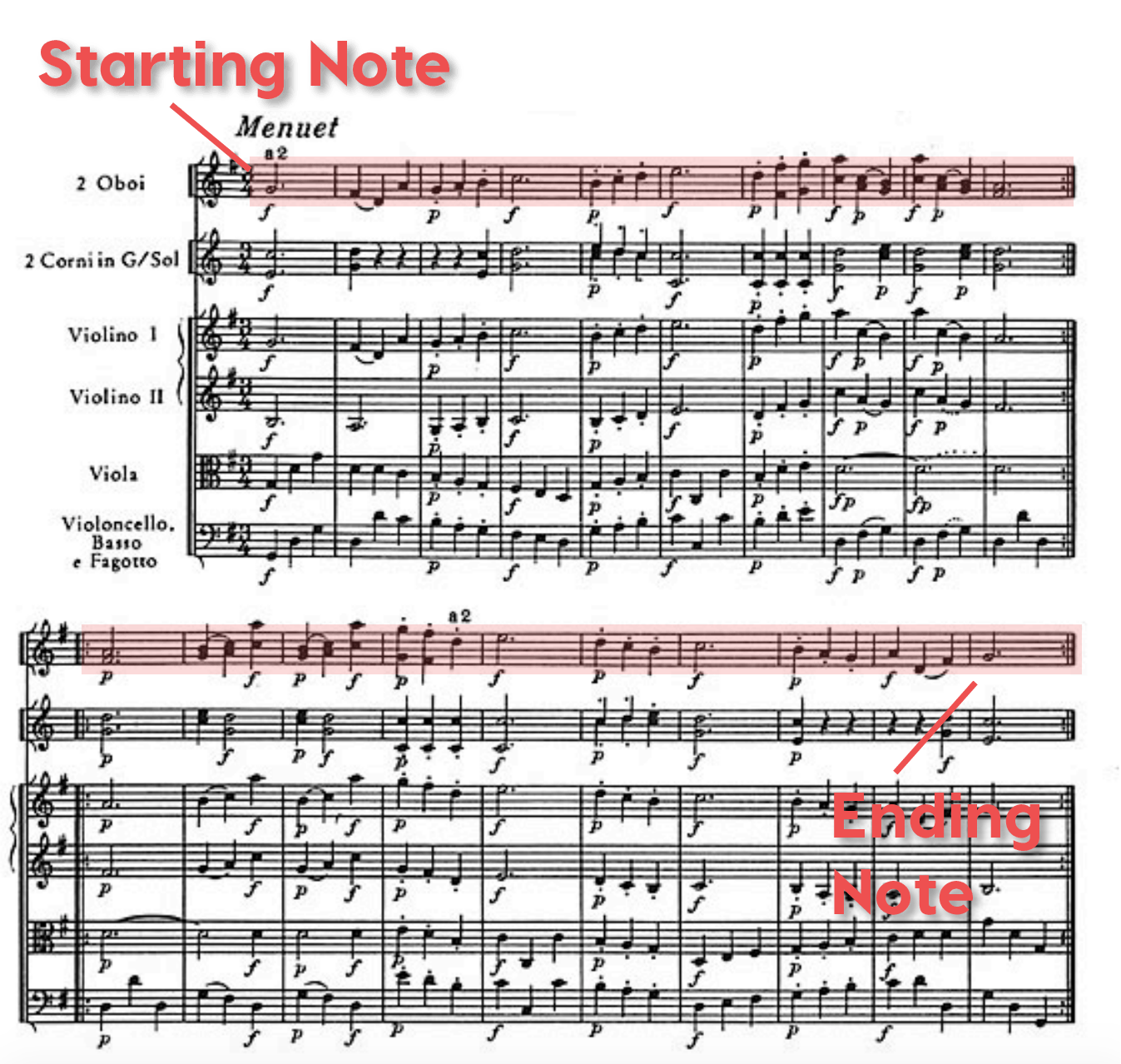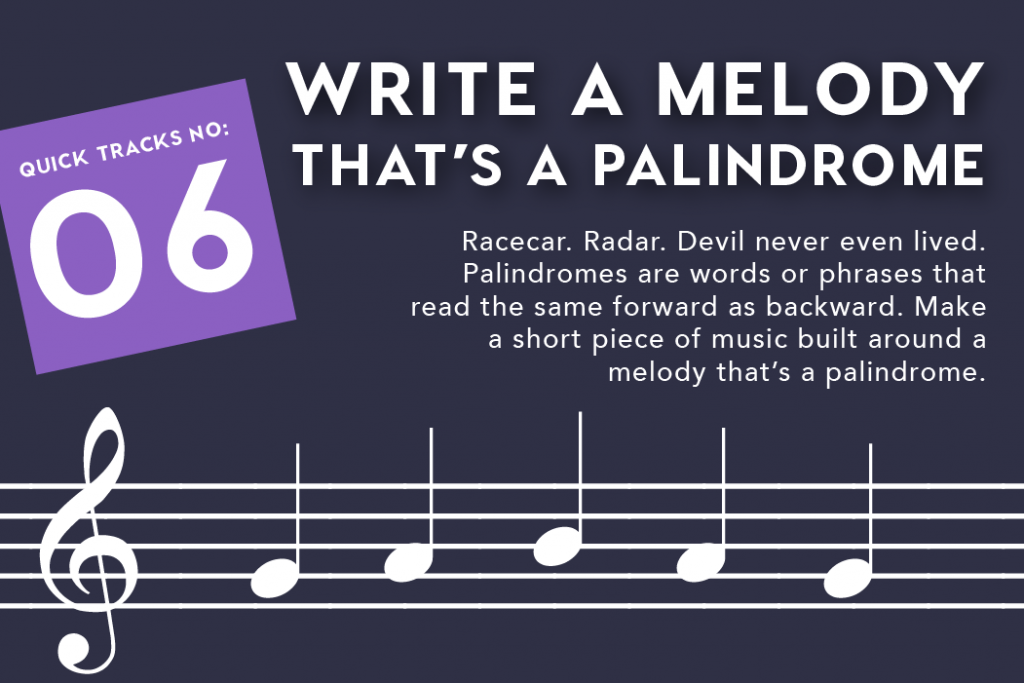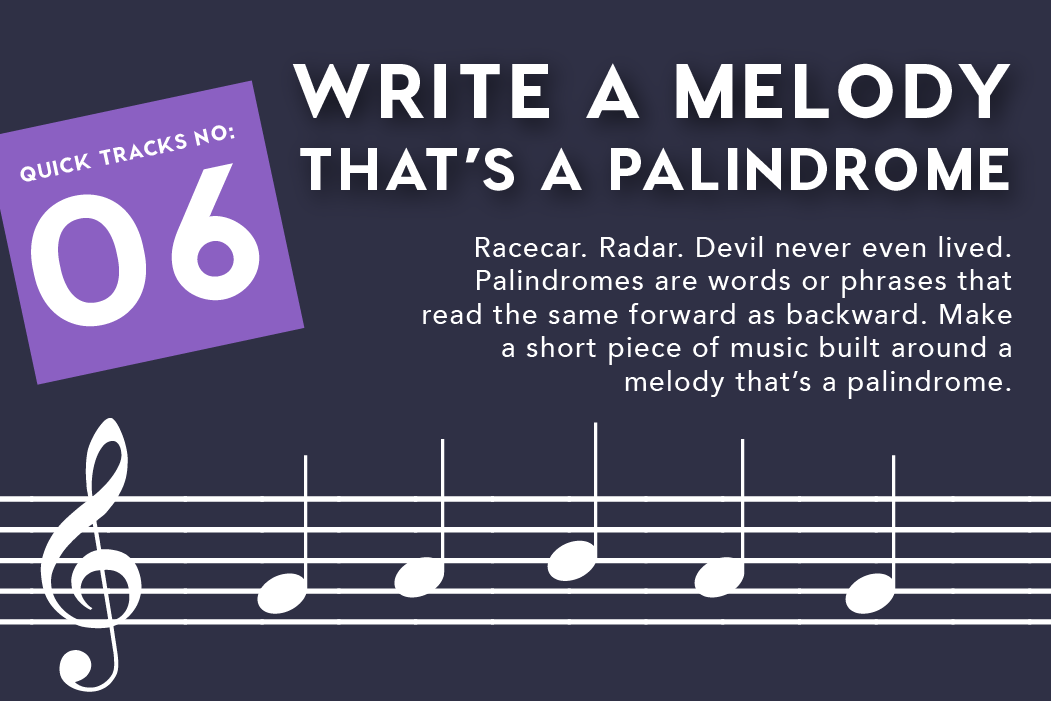Welcome back to the dance floor, Quick Trackers! Once a month, we hook you up with a short production or songwriting challenge, aimed at helping to up your musicianship. To respond to the challenge, just email us, leave a comment, or post to social media with the hashtag #quicktracks and tag us @learntosoundfly.
Draw, o coward! In words, alas, drown I. A man a plan a canal Panama.
Such are the many delights of palindromes, those playful tropes of verbiage that sound the same backward as forward. We all know a couple and probably even have a few favorites (Llama mall?), but have you ever tried making a musical palindrome?
This week, we challenge you to write a short piece of music that’s built around a melody that’s a palindrome. It can be a solo piece only containing the melody, a short song where the melody is supported by other instruments, a little groove if you’re a producer, or something else — as long as the main melody you use sounds the same backward as forward. That’s the only rule!
(Note: If you’re feeling like a supreme challenge, then we also welcome you to try to write an entire multi-voice piece of music that sounds the same forward as backward. It feels like we’re getting into some A Beautiful Mind, genius-prodigy stuff here, so this is extra credit.)
Making Great Melodies
One of the reasons we chose this particular Quick Tracks is that a lot of our students in Mainstage courses recently have been asking us about different approaches to writing melodies.
On the surface, melody-writing seems like one of the simplest elements of making great music. After all, you don’t have to worry about tricky harmonies or rules of counterpoint or polyrhythms or software or anything like that. But the truth is that the lack of guidelines also makes it really tricky. When literally any melody is possible, how do you come up with a good one?
Well, here at Soundfly, we believe that it’s partly a matter of volume and partly a matter of giving yourself constraints. By volume, we simply mean practice making a lot of different melodies until you find ones that you love. By constraints, we mean give yourself certain rules to guide your own melody writing and push yourself to come up with interesting ideas.
They can be things like: “Compose a four-bar melody using only chord tones” or, “Write a two-measure melody that asks a question and a two-measure melody that acts as a response.” Or, for that matter, “Compose a melody that’s a palindrome.”
The biggest things to watch out for while doing this challenge are:
- The Rhythm. After trying this myself a few times, I can say comfortably that straightforward rhythms are much easier than syncopated ones. That said, whoever said easier is better? Keep an eye on those dotted rhythms and make sure you’re reflecting them back correctly.
- The Musicality. One of the easiest ways to do this challenge is simply to write out a melody and then reverse it, especially if you’re writing in a DAW. But will that sound good? There’s a chance it might sound like a robot making music rather than a catchy tune, so take a minute afterward, if you decide on this approach, to make sure that your melody is musical.
One great way to ensure that your melody is one that will stick with you is to sing it, even if you’re not a singer. The act of singing it will help you discover the musicality and lyricism of what you’ve written and make any necessary changes.
Looking for Inspiration?
There are a few examples of musical palindromes out there, from Bach to Berg, but perhaps the most famous example is Joseph Haydn’s Symphony No 47 in G Major. Haydn has a short little musical moment within the piece that sounds exactly the same forward and backward — and you can kind of hear it in the music, especially in how he’s chosen to use his dynamics.
The strong contrast between piano and forte in very close proximity makes it very obvious when the same idea comes around again, only backward. As a listener, you hesitate for a second, thinking, “Have I heard this before?”
You can see it in the score (which I grabbed off the Petrucci Music Library, a great source for public domain music). I’ve highlighted the top voice simply because it’s the easiest one in which to see the palindrome, but the whole piece is palindromic. Take a look!

And then take a listen below. The Minuet part starts around 13:45.
Of course, you don’t need to be as elaborate as all that! Simply write a great melody that can be played in reverse and sound the same. We can’t wait to hear what you come up with!
Share your work with us!
Get 1:1 coaching on your music from a seasoned pro.
Soundfly’s community of mentors can help you set the right goals, pave the right path toward success, and stick to schedules and routines that you develop together, so you improve every step of the way. Tell us what you’re working on, and we’ll find the right mentor for you!





